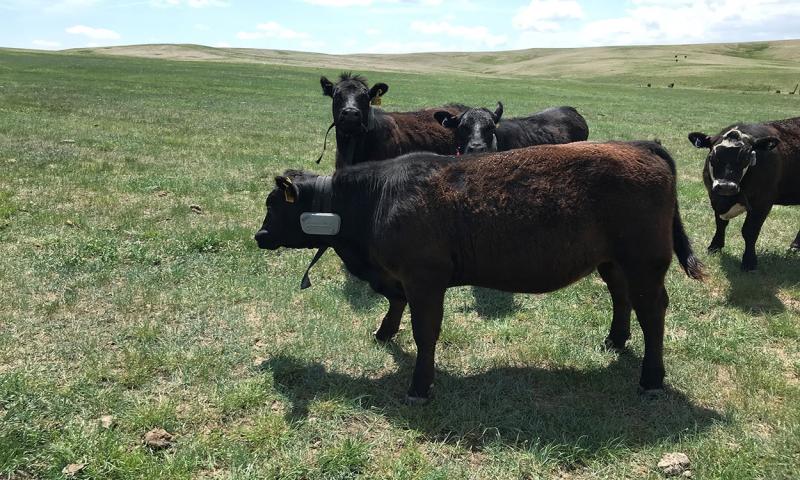
Recent advancements in technology have made their way into precision agriculture, with emphasis placed on using new technologies to increase crop yields and profitability, while simultaneously lowering levels of inputs needed like water, fertilizer and herbicides. Although widely used in row-crop production, precision agriculture is only just beginning to move into the ranching world. Virtual fencing, though, has started making waves in the cattle industry. Time and research will tell us more about how adaptable and transformative this precision technology is in the cattle industry; we are researching its use and utility at the South Dakota State University (SDSU) Cottonwood Field Station starting this summer (Figure 1).
Virtual fencing – borders without physical barriers – can be used to implement precision grazing management. Fences are the traditional tool used to dictate boundaries on livestock grazing and to manage landscapes. There are mixtures of private, state and federally owned lands across the Northern Great Plains that create unique challenges for providing adequate natural resource management and implementing conservation practices, such as rotational grazing. Many ranchers are hesitant to adopt rotational grazing, because it requires the installation of new water sources and fences, and those additional costs are unattractive; material and labor costs for one mile of fence can easily exceed $10,000. This reluctance is exacerbated on property that is leased privately or has a state or federal grazing permit. While expensive, fencing is also necessary in some instances, such as excluding cattle from a riparian area to allow for landscape regeneration.
About Virtual Fencing
Virtual fencing transforms manual labor into cognitive labor, and therefore has the capacity to improve producer efficiency and have a positive effect on animal efficiency. Virtual fencing is most often thought of as the “invisible fence” for use with cats and dogs, but the technology and interested parties have since evolved to include applications for other species, such as goats. Research investigating virtual fencing for cattle is relatively new, with few published studies. A virtual fence consisting of a collar worn by cattle and an above-ground induction cable was effective in one study; however, the above-ground induction cable acted as a visual deterrent and was the main determining factor in keeping the cattle contained. In contrast, a virtual fence collar with an auditory stimulus followed by electrical pulses successfully contained grazing dairy cattle within predetermined areas 99% of the time. Newer advancements in virtual fencing for cattle have focused on a GPS-enabled collar that is placed around each animal’s neck. There is a three-way interaction between the collars, a base station in the field and a software subscription. The software subscription allows the user to “draw” their pastures. These boundaries transmit to the base station (operated by cellular and solar), which pushes the virtual fence to the collars. The user can see the position and movement of each collared animal and can easily rotate animals among paddocks with a few clicks.
Potential Benefits
Virtual fencing as a tool to implement rotational grazing has several potential benefits for producers with respect to their resources (financial, time), grassland management and animal performance. First, virtual fencing allows a producer to “draw” a paddock to allow access to existing water features, saving money and labor on unnecessary water development. Second, minimal time is required to move cattle and check fences as it is all done via software. Third, virtual fencing provides the means for producers to capture the environmental benefits of rotational grazing. Fourth, it could easily be implemented on leased land, because livestock operators do not need to attach permanent improvements (fences, water developments) to someone else’s real property. A final benefit of virtual fencing is that producers have greater control over animal movement on the landscape, and therefore animal performance. Fence boundaries can be drawn based on factors like elevation, soil type, plant communities and forage quality, so that animals can be moved to areas with the highest quality forage. Ultimately, virtual fencing exemplifies the potential impact technology has on increasing animal and producer efficiency while creating positive impacts on the landscape.

